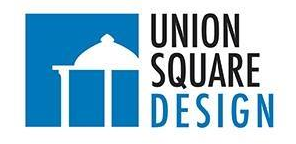Web Typography: The “Neue” Style
Finding the right web typography is like walking a tightrope–font should not confuse, but the letters must pique the reader’s interest. Good typography should be invisible, but never neutral. Subconsciously, we all recognize the fonts of our favorite authors, like George R.R. Martin. Your font is your brand, the digital equivalent of a business handshake. Font subtly reminds us we have reached the right website, the north star of the internet. Like the air we breathe, we might not think of font every time we read. But without Helvetica, not even Google would work.
But just how valuable is typography on the web?
No doubt the answer varies. When The New School recently re-branded, they invested 362-million in their font, “Neue”. Using a complex algorithm that mimics random letter widths and lengths, as well as an array of popular fonts, the New School set itself apart from older Manhattan schools. A highly utilitarian font, The New School’s new internet-friendly typography helped them link their schools in their logos. Enrollment at the New School, one of the nation’s most expensive colleges, has spiked since the unveil of “Neue”.
Typography Today
In a world where digital animations and three-dimensional layouts expand the horizons of website design every day, the basics often slip our minds. We all love the bells and whistles, but without web typography we are lost. Especially on the internet–the vast, ethereal plane many of us navigate without understanding–font is essential. This is a lesson I first learned while stretching high school essays to meet page limits. Font quite literally means the difference between failure and success.
Images may capture attention, but words hold our focus. Web typography must inspire your visitors to read further, to click on, and to scroll until their fingers cramp with satisfaction. The right font also establishes a hierarchy of reading for a platform divorced from the physical page–the wrong heading style, boldface type, and italics could spell illegibility for your readers. Likewise, unresponsive typography renders your entire website obsolete. Your website’s typography tells the digital reader everything they need to know, from where to start to what they can skip over.
Judge a Word by its Cover
The way your font looks is just as important as whatever you have to say. Without fluid lettering even the best images become a distraction. In the digital age, typography bridges the gap between media and message, so your reader knows he has come to the right place and how they can navigate your website.
Much like the freehand signature, web typography personalizes your message. Penmanship may not be taught as widely as it used to, but the architecture of each letter retains a profound effect on the reader’s eye–should the font catch and hold the eye, for example, or allow the reader to speed read without tiring their eyes.
Easy on the Eyes
The laws of aesthetics apply to print. Certain shapes are abrasive, others soothing. The right combination smooths over any composition. Stark, bland, or quotidian typography threatens to make your domain look unprofessional at best.
Times New Roman never raise eyebrows on a high school paper, but choosing a standard Word font for your domain is like wearing the same tie to work every day for a month, so boring it is unprofessional. Internet typography is an art, like architecture. Especially on the internet, competing with media and evil pop-ups, Cookie-cutter fonts do not even register with your online reader.



